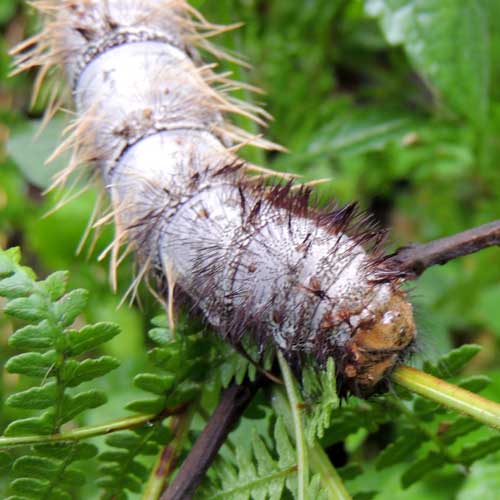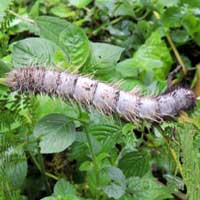Silk Moth Larva
G. sp.

This larva (caterpillar) was found crawling on the ground in South Nandi Forest, Kenya, April, 2013.
All moths and butterflies have four life stages, each with its own distinct appearance and habits. Linking each stage that might be found in an environment requires that the species be ‘reared out.’ Ideally one captures an adult female moth or butterfly, obtains from her a set of eggs, rears the hatching larvae (caterpillars) on the correct host plant, providing for the proper place for the mature larva to pupate and undergo metamorphosis (often in a cocoon or chrysalis) to the adult. When each of the stages is described and thus linked, the life history of the moth or butterfly is the result. For some species this process could take as long as a year and requires careful dedication by an observant naturalist. It is valuable work that anyone can contribute. Many, many species of African insects have incomplete or no life history information.

This larva is very well defended against birds which normally find caterpillars an easy meal. If the bird attempts to swallow this worm head first as it normally would, sharp, forward facing spines make this too painful. On the other hand if the birds grasps the worm at mid-point, the powerful mandibles on the head will turn and bite the predator.